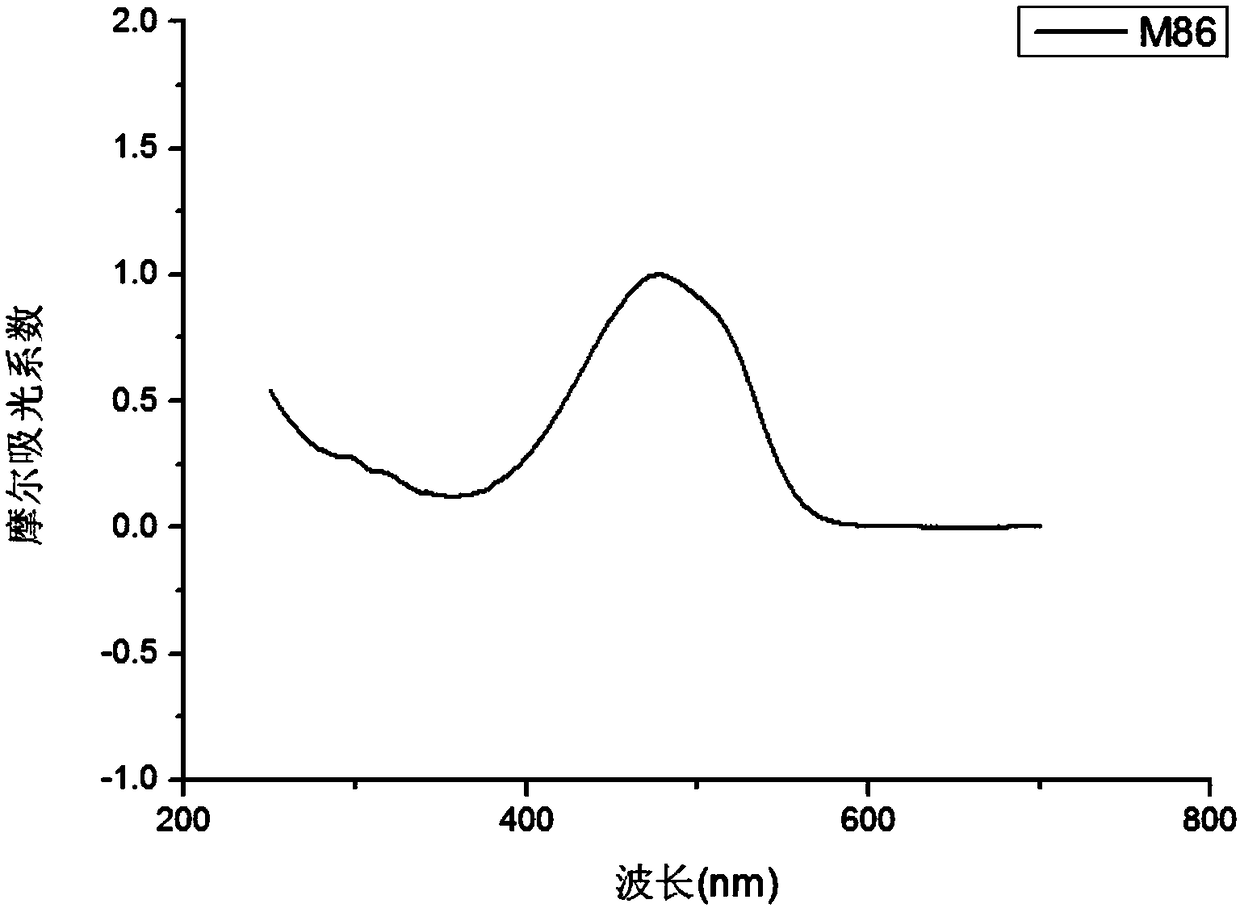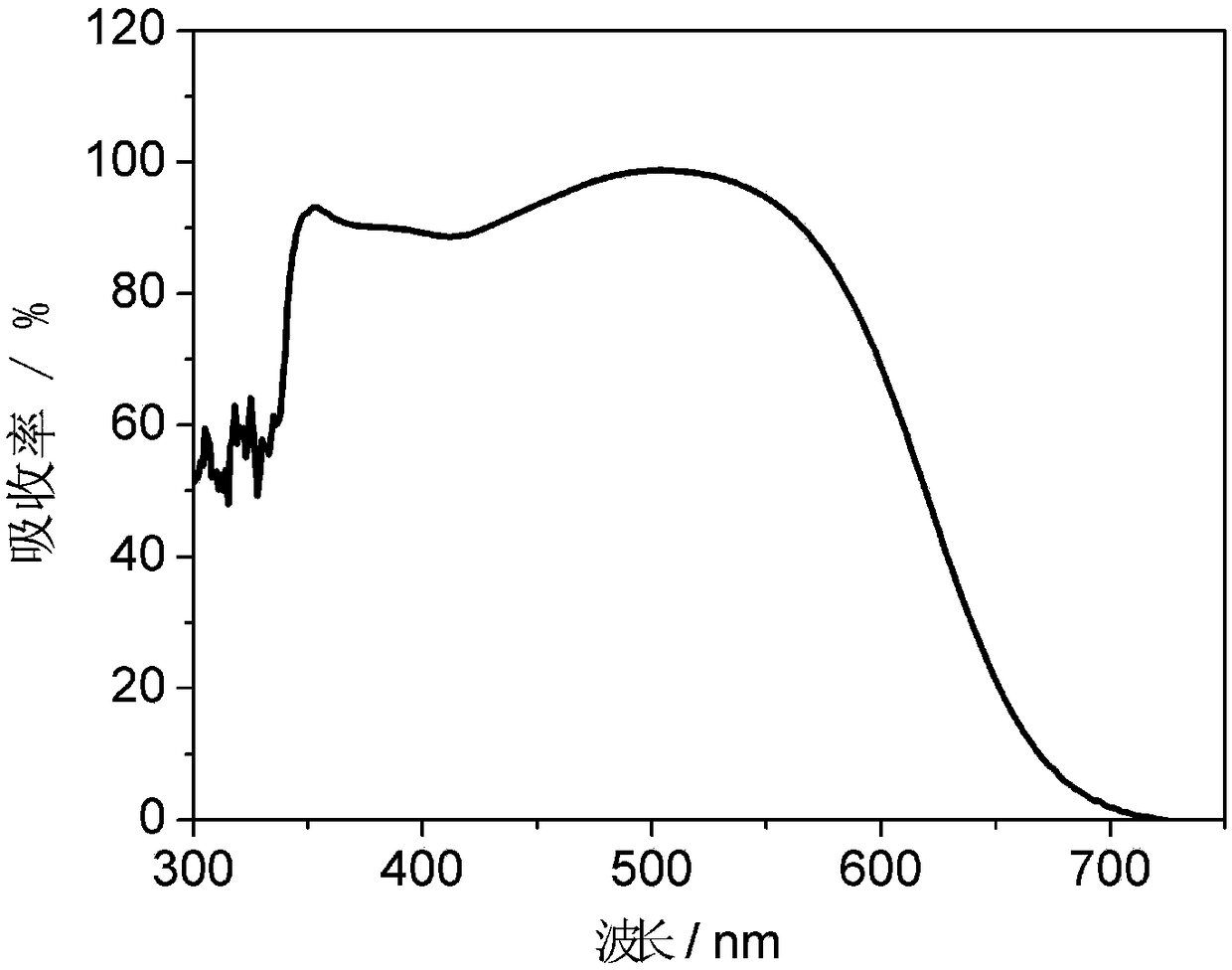Preparation and application of indeno pyrrole thiophene photosensitive dye
A technology of indenopyrrolethiophene and photosensitive dyes, which is applied in the field of dyes, can solve problems such as limiting the open circuit voltage of batteries, and achieve the effects of easy synthesis, improved photoelectric conversion efficiency, and high yield
- Summary
- Abstract
- Description
- Claims
- Application Information
AI Technical Summary
Problems solved by technology
Method used
Image
Examples
preparation example Construction
[0041] The preparation method of the dye-sensitized titanium dioxide photoanode in the above-mentioned application goes through the following steps:
[0042]Apply the titanium dioxide slurry evenly on the FTO conductive glass by screen printing, sinter at a high temperature of 500 degrees Celsius for 30 minutes, cool naturally to room temperature, and use 50 mmoles of TiCl 4 The solution was treated for 30 minutes, the surface was rinsed with distilled water and ethanol, and dried with nitrogen gas; and then sintered at a high temperature of 500 degrees Celsius for 30 minutes to obtain a titanium dioxide porous membrane with a thickness of about 3 microns.
[0043] The structure of the battery device is as image 3 As shown, from bottom to top are (2) platinum layer, (3) electrolyte, (4) photosensitizer, (5) titanium dioxide film, (1) conductive glass; the effective light area of the battery is: 0.16cm 2 ; Test light source: AM1.5solar simulator-Oriel 91160-1000 (300W); Dat...
Embodiment 1
[0046] Synthesis of compound III (see Figure 6 ):
[0047] Under ice bath, add 4 mL of dry DMF to the one-necked bottle, and add 1 mL of POCl dropwise 3 , and stirred for 30 min to obtain the Vilsmeier reagent. Compound II was dissolved in 3 mL of dry DMF, and Vilsmeier reagent was added dropwise to the reaction solution, and stirred overnight. The reaction was quenched with ice water, the crude product was extracted with ethyl acetate, washed with water, dried over anhydrous magnesium sulfate, and the solvent was removed under reduced pressure. Finally, compound 3 (85% yield) was obtained as a yellow solid by column chromatography. 1 H NMR (400MHz, CDCl 3 )δ9.90(s,1H),7.83(d,J=8.1Hz,1H),7.74(s,1H),7.66(d,J=4.3Hz,2H),7.49(d,J=8.6Hz, 2H), 7.10(d, J=8.4Hz, 4H), 3.92(s, 3H). 13 C NMR (101MHz, CDCl 3 ): δ182.7, 149.3, 145.5, 144.2, 140.3, 133.6, 132.5, 128.4, 127.4, 123.3, 122.1, 119.5, 114.7, 107.5, 47.5, 31.5, 30.8, 26.9, 22.4, 14.0. HRMS (EIS) calcd 21 h 19 BrN 2 o ...
Embodiment 2
[0055] Fabricate dye-sensitized solar cells with indenopyrrolethiophene photosensitizing dye VI as photosensitizer: heat the prepared titanium dioxide electrode at 80°C for 10 minutes, then soak in 3×10 - 4 M in dichloromethane / ethanol (1 / 1 volume ratio) solution. Take it out after 24 hours, rinse the electrode surface with absolute ethanol, and blow dry. The formula of the electrolyte is: use acetonitrile as a solvent, add 0.25 mol / liter of cobalt(II)-phenanthroline hexafluorophosphate ([Co(phen) 3 ](PF 6 ) 2 ), 0.06 mol / L cobalt (III)-o-phenanthroline hexafluorophosphate ([Co(phen) 3 ](PF 6 ) 3 ), 0.8 mol / L of tert-butylpyridine (TBP) and 0.1 mol / L of lithium bistrifluoromethanesulfonimide. Tested under simulated sunlight, the open circuit voltage of the battery (V oc ) is 931mV, short-circuit current density (J sc ) is 15.1mA cm -2 , the fill factor (FF) is 0.70, and the photoelectric conversion efficiency is 9.84%. Its photocurrent and photovoltage curves are sh...
PUM
| Property | Measurement | Unit |
|---|---|---|
| thickness | aaaaa | aaaaa |
Abstract
Description
Claims
Application Information
 Login to View More
Login to View More - R&D
- Intellectual Property
- Life Sciences
- Materials
- Tech Scout
- Unparalleled Data Quality
- Higher Quality Content
- 60% Fewer Hallucinations
Browse by: Latest US Patents, China's latest patents, Technical Efficacy Thesaurus, Application Domain, Technology Topic, Popular Technical Reports.
© 2025 PatSnap. All rights reserved.Legal|Privacy policy|Modern Slavery Act Transparency Statement|Sitemap|About US| Contact US: help@patsnap.com



